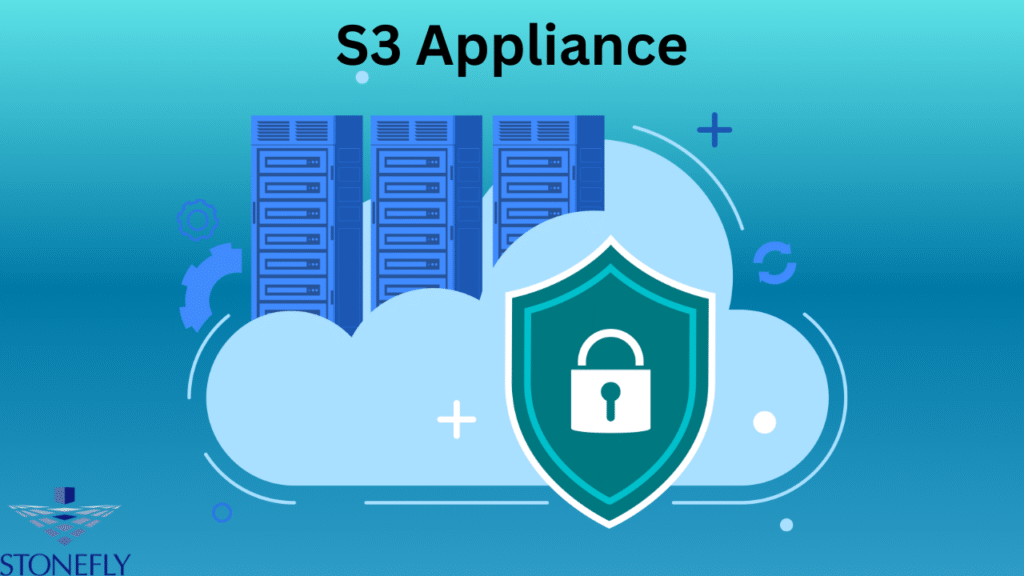Understanding the Power and Purpose of an S3 Appliance
Data continues to grow at an unprecedented rate, placing immense pressure on organizations to manage, secure, and analyze it effectively. As enterprises seek scalable and efficient storage solutions, object-based systems have emerged as the cornerstone of modern data architecture. The S3 Appliance represents a powerful innovation in this space, delivering the benefits of scalable object storage through a dedicated hardware and software integration. It allows enterprises to maintain full control over their data infrastructure while achieving performance and compatibility with S3-based applications.
What Is an S3 Appliance?
An S3 Appliance is a preconfigured hardware and software platform that provides object storage capabilities compatible with the S3 protocol. Unlike general-purpose servers or virtual deployments, this appliance comes optimized for object storage workloads, ensuring maximum performance, reliability, and security. It combines the simplicity of plug-and-play hardware with the flexibility of S3 interfaces, offering organizations a private, secure, and scalable environment for unstructured data management.
Core Features of an S3 Appliance
1. S3 Protocol Compatibility
The appliance adheres to S3 API standards, enabling seamless integration with existing tools, backup software, and analytics platforms. This interoperability allows organizations to replace or complement cloud storage with an on-premise equivalent.
2. Preconfigured Hardware and Software Integration
Unlike traditional storage solutions that require separate setup and tuning, an S3 Appliance arrives ready for deployment. It includes optimized hardware components, a tuned operating environment, and object storage software configured for immediate operation.
3. Scalability and Elasticity
Designed for data growth, the system supports horizontal scalability. Additional nodes can be added to increase capacity and performance without interrupting ongoing operations.
4. Security and Compliance
Advanced encryption, access control, and audit mechanisms ensure that data remains secure and compliant with regulatory requirements. Data stored within the appliance never leaves the organization’s control, making it ideal for sensitive workloads.
5. Simplified Management
A unified management console provides visibility into storage usage, health, and performance. Administrators can set policies for lifecycle management, data retention, and replication with minimal complexity.
Benefits of Using an S3 Appliance
On-Premise Control
By maintaining data locally, organizations retain complete control over their security posture and compliance obligations. This is especially important for institutions governed by data sovereignty laws.
Performance Optimization
Because it operates within the local network, latency is reduced dramatically. Applications that depend on high-speed data access—such as analytics or media processing—benefit from consistent performance.
Predictable Costs
An S3 Appliance operates on a capital expenditure model, eliminating the unpredictability of variable cloud bills. Organizations gain financial transparency and long-term savings through hardware ownership.
Simplified Integration
Applications using standard S3 APIs can interact with the appliance without modification, ensuring smooth adoption across multiple use cases, from backup to content delivery.
Reliable Data Protection
Built-in redundancy, erasure coding, and replication capabilities ensure high data durability. Even in case of hardware failure, information remains accessible and safe.
Deployment Models
Single-Appliance Setup
Ideal for small and medium-sized organizations, this model provides essential object storage capabilities with minimal infrastructure.
Clustered Deployment
Larger enterprises often deploy multiple appliances configured into clusters, allowing distributed storage and enhanced resilience.
Edge Integration
For organizations operating across multiple sites, appliances can be deployed at the edge to ensure low-latency access while synchronizing data to central repositories.
Implementation Process
Step 1: Assessment and Planning
The first step is identifying data workloads that will benefit from object storage. Consider factors like capacity growth, compliance needs, and integration requirements.
Step 2: Installation and Configuration
The appliance is physically installed in the data center and connected to internal networks. Administrators then configure user access policies, security settings, and replication parameters.
Step 3: Integration with Applications
Applications that rely on S3 APIs are linked to the appliance endpoint. Backup software, analytics tools, or containerized applications can start using it immediately.
Step 4: Performance Optimization
Performance tuning involves adjusting caching, replication, and erasure coding settings to match workload demands.
Step 5: Ongoing Monitoring and Maintenance
Regular system monitoring ensures optimal performance and early detection of potential issues. Maintenance can be simplified through built-in diagnostics and automated alerting.
Security Considerations
Security remains a defining characteristic of the S3 Appliance. Data at rest is typically encrypted using strong encryption standards, while data in transit benefits from SSL/TLS protection. Multi-factor authentication and role-based access control prevent unauthorized entry. For enhanced security, audit logs and immutable storage options can be enabled to ensure data integrity even against insider threats.
Use Cases of an S3 Appliance
1. Enterprise Backup and Archiving
Businesses can centralize all backup and archival data in a secure, cost-efficient manner.
2. Big Data Analytics
Analytical platforms can directly connect to the appliance to process large datasets locally, reducing latency and bandwidth usage.
3. Media and Content Management
Media production companies can store and retrieve large video files without relying on external infrastructure.
4. Healthcare and Research
Medical organizations can store sensitive imaging data and research results securely while maintaining compliance.
5. Edge and IoT Environments
Data collected from sensors or devices can be aggregated locally within an appliance before selective synchronization to other systems.
Integration with Broader Infrastructure
The S3 Appliance is designed to work harmoniously within enterprise ecosystems. It can function as a core component of hybrid or multi-site storage strategies, where local systems manage sensitive data and remote resources handle global distribution. Integration with container orchestration platforms, virtualization technologies, and monitoring tools enhances its operational scope.
Advantages Over Traditional Storage Systems
- Object-based architecture simplifies management of large unstructured datasets.
- Built-in redundancy reduces dependency on external backup systems.
- Automated data lifecycle management ensures efficient capacity utilization.
- The modular design allows future scalability without downtime.
- It provides cloud-like functionality in an on-premise environment.
Challenges and Solutions
Hardware Investment
Initial acquisition costs can be higher compared to cloud subscriptions. However, long-term ownership eliminates recurring expenses.
Maintenance Complexity
While the appliance simplifies management, periodic updates and monitoring are necessary. Automated software updates and health checks reduce administrative overhead.
Capacity Planning
Improper capacity forecasting may lead to underutilization or performance bottlenecks. Regular audits and predictive analytics tools can help maintain balance.
Future Outlook
The role of dedicated storage appliances is expanding as organizations seek to merge the agility of cloud technologies with the reliability of on-premise systems. S3 Appliances are expected to integrate AI-driven data classification, intelligent tiering, and automated scaling in future iterations. Their combination of simplicity, performance, and control positions them as a critical foundation for modern data infrastructure.
Conclusion
An S3 Appliance provides a balanced solution for organizations that demand the scalability of object storage and the control of local infrastructure. By combining preconfigured hardware with S3-compatible software, it delivers speed, reliability, and compliance without the drawbacks of public cloud dependency. In an era of increasing data volumes and regulatory scrutiny, this appliance offers a strategic, secure, and cost-efficient way to manage unstructured data while enabling long-term digital resilience.
FAQs
Q1: What is the main purpose of an S3 Appliance?
It provides on-premise object storage that combines S3 compatibility with optimized performance and security.
Q2: Can an S3 Appliance replace cloud storage?
Yes, it can serve as a full or partial replacement, especially when organizations require data control and predictable costs.
Q3: Is an S3 Appliance suitable for small businesses?
Absolutely. Many vendors offer scalable models designed for small and medium enterprises.
Q4: How does an S3 Appliance ensure data durability?
Through built-in redundancy, erasure coding, and replication across nodes to prevent data loss.
Q5: What industries benefit most from S3 Appliances?
Healthcare, finance, research, and media sectors benefit greatly due to their high compliance and data performance needs.





